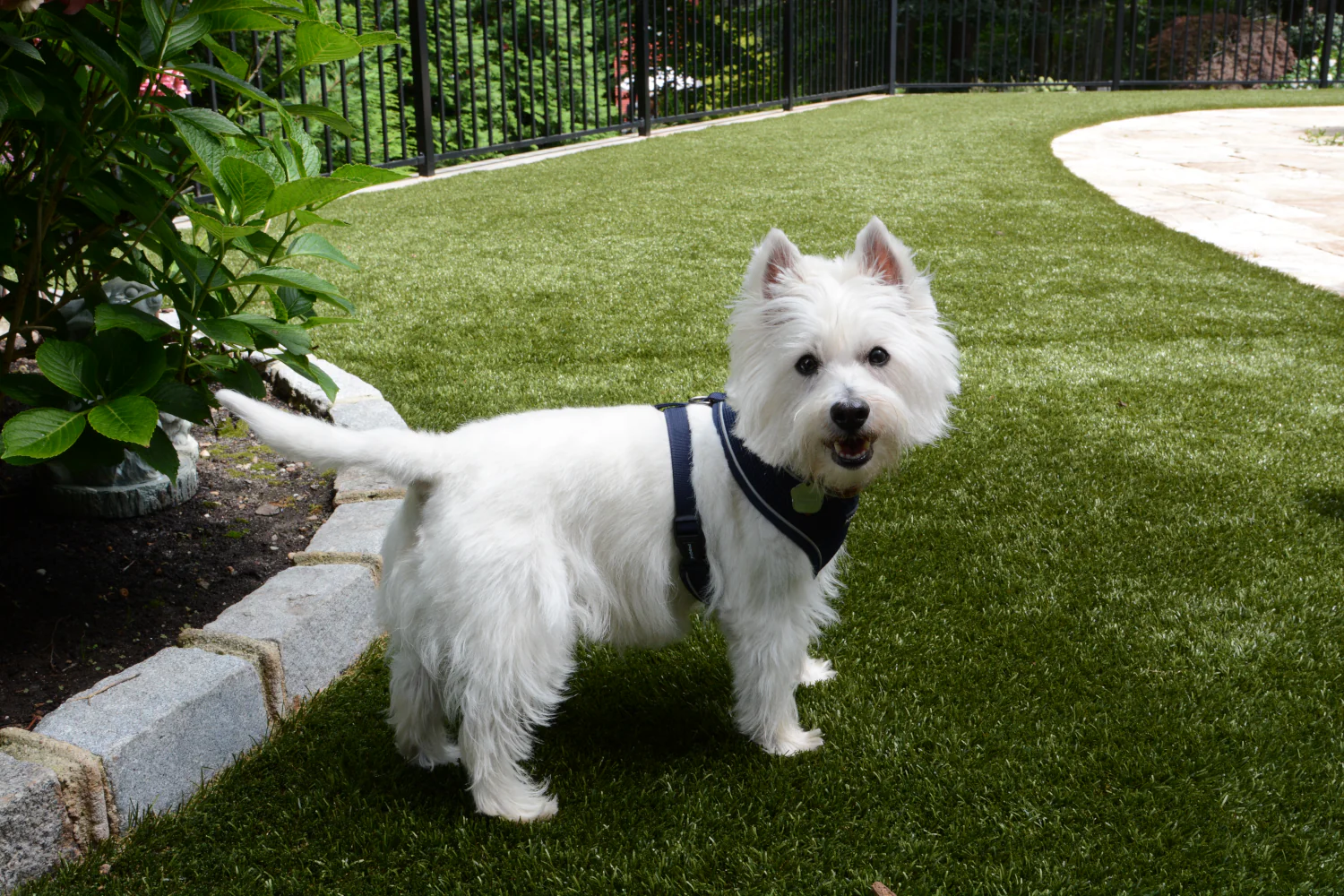How to Avoid Pet Turf Mistakes

You installed artificial grass for the easy care and tidy aesthetics — smart move. But pets make things different. Here’s a quick guide to the most common problems that happen to fake grass for dogs and exactly what to do about each of them, the easy way.
1. LETTING SOLID WASTE SIT
What happens: A missed mess dries, sticks, or soaks into the infill.
Why it matters: Dried messes can trap bacteria and leave stains.
Fast fix: Pick up and dispose as soon as you can. If residue remains, use a soft brush and a hose to lift it out.
Habit to build: Keep a pooper scooper and lidded trash can near the yard for quick cleanups.
2. CONCENTRATED URINE SPOTS
What happens: Dogs favor a few spots and urine pools there.
Why it matters: Strong odor and discolored infill may follow.
Fast fix: Flush with clean water every once in a while to prevent buildup, especially if rain is lacking. For stubborn smells, a pet enzyme cleaner made for artificial turf might be necessary when using regular sand infill. Using specialized SWG/Shaw K9 infill stops odor completely.
Preventive move: Shift treat spots or set toys to spread traffic around.
3. DIGGING, CHEWING, AND NAIL DAMAGE
What happens: Dogs paw at the ground, gnaw turf, or their nails catch seams.
Why it matters: Holes, loose edges, and frayed turf wear it out early and create tripping spots.
Fix: Trim nails regularly and pin down loose areas with turf pins or approved bonding adhesive.
Prevention: Give dogs a single digging spot and provide toys.
4. WATER DRAINAGE PROBLEMS
What happens: Water collects after storms or heavy use.
Why it matters: Puddles cause mildew and feel unpleasant for pets.
Fast fix: Remove debris from drainage channels. Lightly lift turf edges near drains to check for blockages.
When to call a pro: If the same spot puddles after many rains, the installation may need correction.
5. FLATTENED TURF FIBERS
What happens: Frequently used areas start to look worn out and flat.
Why it matters: Compressed infill keeps dirt in and makes turf harder.
Fast fix: Lift blades with a soft-bristle broom.
Routine: Brush heavily used turf once a month to keep fibers standing tall.
6. USING THE WRONG CLEANING PRODUCTS
What happens: Strong chemicals weaken the backing and fibers.
Why it matters: Faded turf, loose seams, and early wear.
Fast fix: Rinse affected areas thoroughly and use pet-safe gentler turf cleaners. A natural vinegar and water mix works for many scent troubles.
Note: Avoid strong chemicals and wire bristles.
QUICK CARE CHECKLIST
- Remove droppings within a few hours
- Flush urine spots at least once a week
- Brush high-use turf areas monthly
- Keep food and messy treats on a mat
- Choose pet-safe products for synthetic turf
- Investigate drainage after heavy storms
NEED A DEEP PROFESSIONAL CLEANING
Little habits keep your artificial turf for dogs smelling fresh and appearing well-kept. If you prefer assistance — from a deep clean to checking drainage or refreshing infill — Southwest Greens can take care of it so your turf stays pet-friendly and guest-ready. Get in touch, and we’ll recommend solutions for your yard.
